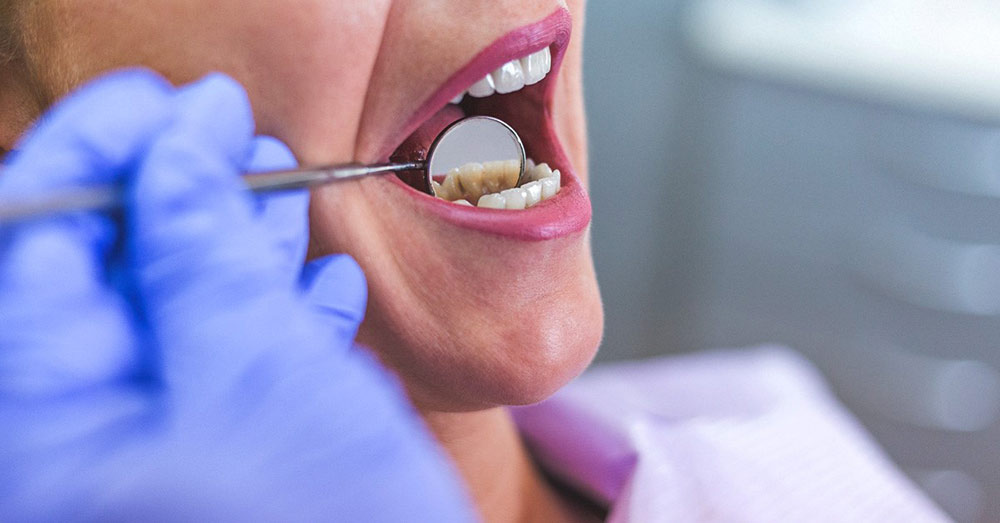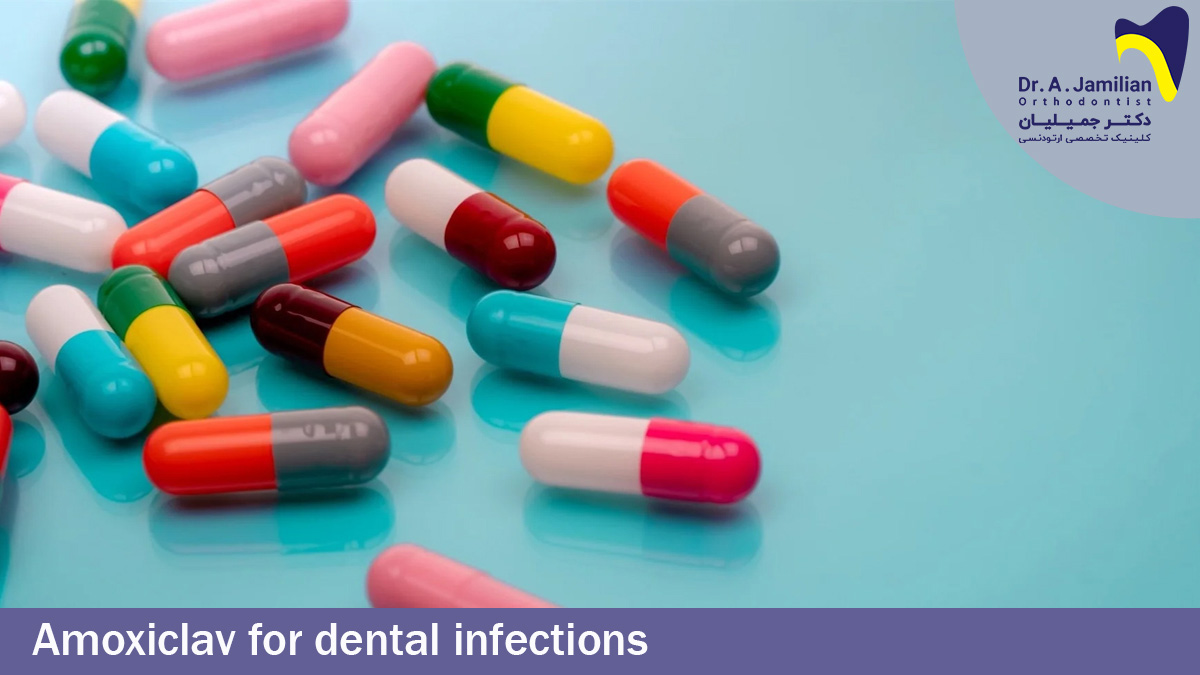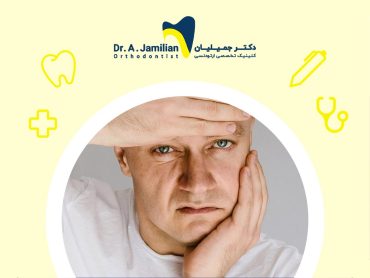amongst the most severe and troublesome dental diseases and disorders, dental infections come first. However, there are many ways and solutions to treat dental infections. Both modern medicine and herbal medicine now propose various methods to deal with dental infections.
In this part of our article, we would point out some methods used for treating dental infections, particularly one of the most important antibiotics used for dental infections, i.e. amoxiclav. Keep in mind that using any sort of antibiotics without your dentist or physician’s instruction is not recommended at all. All our articles enrich your general information on a certain topic. This article discusses this antibiotic. To start, you shouldn’t use it whenever you want to get rid of all forms of dental infections.
Using any sort of antibiotics is forbidden before diagnosing the main cause of the dental infections. This is because a makeshift treatment by antibiotics would lead to some more serious problems. The infections would cause malnutrition. Here are cases in which although people have met all oral hygiene instructions, they anyway suffer from dental infections.

The Best Antibiotic for Dental Infections
Amoxiclav is considered as a proper option for dental infections, but there are other antibiotics to treat the dental infections. In most cases, dentists would prescribe amoxiclav for patients who suffer from dental infections. Other special treatment methods would be used in the next phases of treatment, if antibiotic therapy doesn’t work for a specific patient.
Dental care practices must be done regularly, only in this way you can avoid dental decay and infections. On top of this, they also help you save money on oral and dental hygiene.
Various Types of Amoxiclav for Dental Infections
There are various types of amoxiclav for dental infections, the most important of which are amoxicillin capsules, best known for dental infections. While amoxiclav is used extensively for most cases of the dental infections, it must be used under the physician’s supervision and in limited doses. Physicians also usually prescribe this antibiotic for treating the cystic acne. For dental infections, it is normally taken every 8 hours (three times a day). This type of amoxiclav is usually useful for the dental infections and brings about ideal consequences.
Commonly, Amoxiclav is prescribed in the form of pills and or syrup. Some of its side effects are nausea, vomit, diarrhea, jaundice and xerostomia. However, these symptoms are not seen in all people. Call your doctor and stop consuming the antibiotic, if your body experiences any special allergy after consumption.
How to Use Amoxiclav
The way of consumption and dosage of amoxiclav is different for different age groups, as amoxiclav syrups are preferred for children. If no improvement is seen in your condition, you need to call your physician or your orthodontist. Because your dental infection is so serious that this medicine would not work for it, and your therapist needs to find another way to treat it.
In most cases, amoxiclav is prescribed for temporary treatment of dental infection. Dentists diagnose the cause of dental infection and then take necessary measures to treat it. Depending on the judgment and diagnosis of the dentist who had examined you, amoxiclav would be recommended either before or after the main treatments.

Dental Antibiotics
Dental antibiotics, e.g. penicillin and amoxicillin, mostly are used to assist treatment of dental infections. Metronidazole may also be prescribed for some bacterial infections. Sometimes, to cover more bacterial species, penicillin and metronidazole are prescribed simultaneously.
Amoxicillin, penicillin, cephalexin, clindamycin and azithromycin are the most common antibiotics used to treat dental infections. Choosing a proper antibiotic, when your dentist prescribes one of the mentioned antibiotics, depends on the fact that whether you have any allergy to penicillin or have any other problem?
Usually amoxicillin and amoxiclav are the first choices of dentists, because they are very effective and have the least gastrointestinal side effects.
American Dentists Association (ADA) recommends the following instruction for using dental antibiotics:
- Oral amoxicillin (if you are not penicillin-allergic): 500 m.gr., taken 3 times a day for 3 to 7 days.
- Oral penicillin (as the second choice): 500 m.gr., taken 4 times a day, for 3 to 7 days.
- If you have history of severe allergy (symptoms like urticarial, inflammation or hypotension) to penicillin, ampicillin or amoxicillin, ADA recommends you instead to use the following:
- Oral azithromycin: loading dose: 500 mg day one, then 250 mg for 4 days. or
- Oral clindamycin: 300 m.gr., taken four times a day, for 3 to 7 days.
- If you have a history of mild allergy to penicillin, ampicillin or amoxicillin, ADA recommends you to use the following:
- Oral cephalexin: 500 m.gr., taken 4 times a day, for 3 to 7 days.
- If the first-line antibiotics do not work for you, other antibiotics including amoxicillin along with clavulanate or metronidazole would be prescribed.
What to eat when we have a tooth infection?
If you suffer from a tooth infection, following a proper diet would reduce your recovery period. Any soft food which is neither very cold nor very hot, contains vitamins and minerals may alleviate pain and inconvenience due to tooth infections. Such foods can be very helpful in improving your dental infection and toothache. Eating hard and rough things with low nutritional value, which would exacerbate the patient’s status, is not recommended.
Treating Dental Infection Using Metronidazole
Penicillin class Antibiotics including penicillin, amoxicillin mostly are used for treating dental infections. Metronidazole may be prescribed for some bacterial infections. Sometimes, to cover more bacterial species, penicillin and metronidazole are prescribed simultaneously.
To treat dental infection and abscess with Metronidazole, dentists prescribe it for five consecutive days. After 3 days, reconsidering the patient’s status is necessary. The consumption dosage of Metronidazole for adults is 400 mg taken three times a day. The recommended dosage of Metronidazole for young adults (10-18 years old) is 200-250 mg, taken three times a day (every 8 hours). The recommended dosage for children (7-10 years old) is 100 mg, taken 3 times a day (every 8 hours).
FAQ about prescription of amoxiclav for dental infections
1- How long would it take for amoxiclav to treat a dental infection?
When a procedure is performed by your dentist to manage an aggressive infection, they would then prescribe amoxiclav for you. Treatment of dental infection with amoxiclav takes 7 to 10 days.
2- Which one is useful for dental infection, oral cefixime or amoxiclav?
Although the dentist’s examination must be prioritized, recently some research has been conducted on the effect of cefixime 400 on the dental infection. It is not useful for treating various causes of the tooth root infection. Some people, without their dentist’s instruction, take cefixime 400 to get rid of their dental infection. So, consumption of this antibiotic to treat the tooth root infection has no effect but causes resistance against antibiotics. Thus, it is recommended to use the safe dose of amoxiclav for tooth infection under supervision of your dentist.
3- Can the dental infection be treated with penicillin 800?
Injecting penicillin 800 to some patients is followed by certain side effects including convulsion and anaphylaxis. Hence, usage of this antibiotic is not very popular for treating various sorts of dental infections. Recently a new study has confirmed the fact that in contrast to injection of penicillin 800, consumption of high doses of oral amoxicillin to treat dental infections will lead to better results. Therefore, taking and injecting penicillin 800 and even higher doses of this antibiotic are not recommended to treat the dental infections. Please don’t forget that the dentist’s judgment and diagnosis after medical examination must be prioritized to anything else.
4- Does oral amoxiclav work for treating gum and tooth infections?
When the drainage procedure was performed by your dentist to manage an aggressive infection, they would prescribe amoxicillin or metronidazole for you. Amoxiclav has the highest efficiency for treating dental infections. Eventually, after examination, it is the dentist who can decide what antibiotic is the best choice for treating gums and teeth treatment.
5- Which one is useful for dental infection, oral azithromycin or amoxiclav?
Azithromycin is an antibacterial antibiotic which bocks growth of bacteria. However, dentists do not prescribe it for all patients who suffer from gum and/or tooth infections. So, amoxiclav is the preferred treatment for dental infections. For this reason, a patient’s examination by the dentist, before prescribing any sort of antibiotic, is very essential.
6- Name a strong antibiotic for dental infections?
It is recommended to avoid consumption of any sort of antibiotics without your therapist’s instructions. Depending on your teeth infection extent and cause, your dentist would prescribe you amoxiclav or metronidazole.
7- Is amoxiclav effective and useful for toothache too?
If your problem is dental infection, certainly you will suffer from a tremendous deal of pain. Taking amoxiclav and treating dental infection with such antibiotics will relieve and alleviate your pain. Please keep in mind that amoxiclav is an antibiotic, so it is not categorized as a sedative or painkiller drug.



